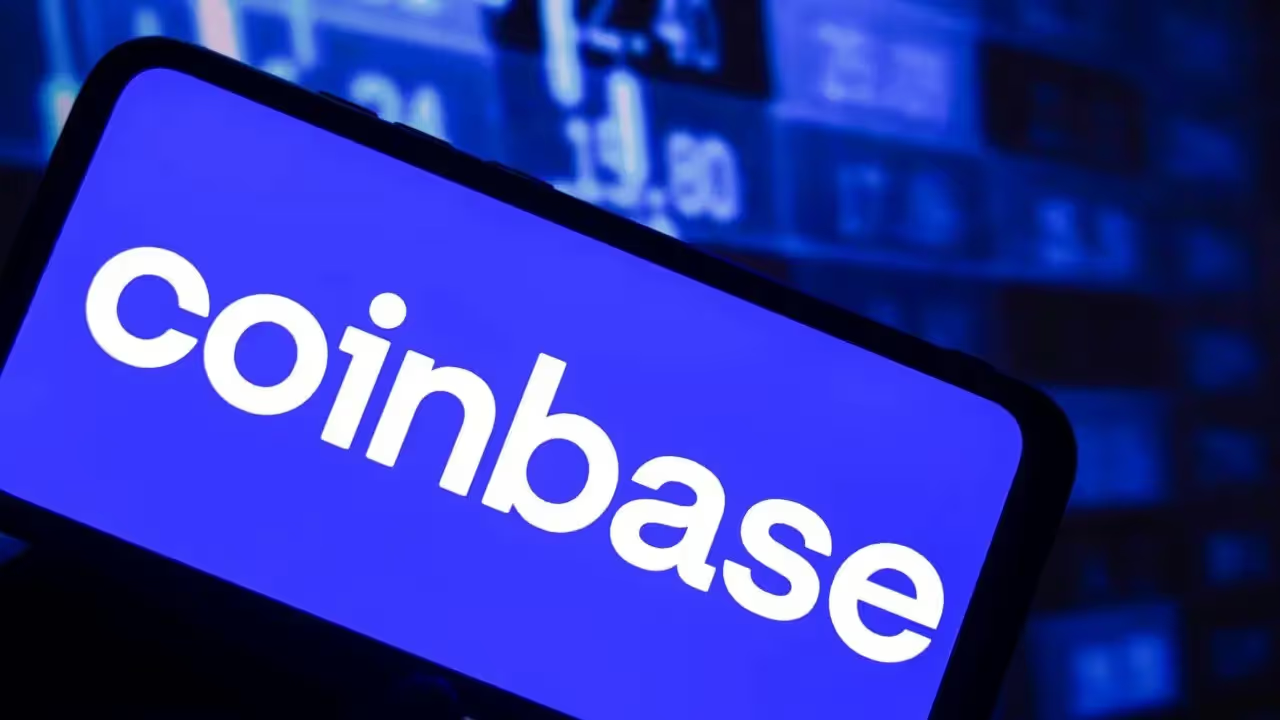Coinbase is one of the most widely used cryptocurrency platforms in the world. With millions of users, it's often the first stop for people entering the digital asset space. If you're wondering, "is Coinbase safe?", you're not alone. Security, trust, and regulation are constant concerns in crypto, especially when real money is involved. Coinbase advertises multiple security layers, including cold storage, two-factor authentication, and insurance coverage.

But those features don’t always prevent breaches, outages, or losses caused by user-side errors. Looking closer at how Coinbase actually works is the best way to understand its strengths and limitations.
What Is Coinbase?
Coinbase launched in 2012 and quickly became one of the most recognized names in crypto. It’s a publicly listed company on NASDAQ, with tens of millions of users and billions in daily trading volume. If you’re new to buying digital assets, Coinbase is often the first platform you hear about. It’s designed to be easy to use, with a simple layout and straightforward buying options. Whether you’re buying Bitcoin or exploring lesser-known tokens, Coinbase offers access to more than 240 cryptocurrencies.
Coinbase’s Role as a Crypto Platform
What makes Coinbase stand out is how it balances usability with regulatory compliance. The platform follows strict anti-money laundering (AML) and know your customer (KYC) rules in regions like the United States, United Kingdom, Canada, and the European Union. These rules aren’t just there for appearances. They affect how you sign up, fund your account, and even how withdrawals are processed.
Coinbase also operates its own proprietary wallet solution — a self-custodial app separate from the exchange — giving more experienced users direct control over their crypto. Unlike custodial wallets where Coinbase manages your private keys, the standalone Coinbase Wallet shifts responsibility to you. This gives users the choice between convenience and full control, which is important in crypto security. You can check out Coinbase alternatives here.
What Do Users Think of Coinbase?
Despite its position as a leading platform, Coinbase isn’t immune to criticism. During high-traffic periods — especially when markets are volatile — users have reported service outages and slow performance. In some cases, people were unable to complete transactions or even access their balances during critical trading moments. These incidents raise valid concerns about how well the platform can handle demand spikes.
Still, Coinbase’s size and legal obligations tend to work in its favor. Its public listing means greater financial transparency than most crypto companies. For users looking for a platform that combines access, regulation, and ease of use, Coinbase remains a major player. But that doesn’t automatically mean it’s safe for everyone in every situation. If you want to make money with Bitcoin using Coinbase, read our guide.
How Coinbase Protects User Assets
Coinbase builds its security around the idea that assets should be protected from both internal and external threats. To reduce the risk of remote hacking, around 98% of user crypto funds are stored in cold wallets — offline systems disconnected from the internet. These wallets are protected with hardware security modules (HSMs), and access requires multi-person approval protocols. Even employees can’t unilaterally retrieve customer funds.
Only a small portion of assets are stored in hot wallets to facilitate withdrawals and trading. These wallets are covered by an insurance policy that helps cover potential losses from breaches or theft. It’s important to note, however, that this policy only applies to Coinbase system failures — not losses from phishing attacks or stolen passwords.
About Coinbase Security
- When it comes to login security, users must set up two-factor authentication (2FA) as a requirement. This can be in the form of an authenticator app, hardware key, or security prompt on a verified device. SMS-based 2FA is still available but considered the weakest option due to SIM-swapping vulnerabilities. Coinbase even encourages adding multiple 2FA methods to avoid being locked out if one is lost.
- All user data and communication on the platform are protected with AES-256 encryption and TLS connections. This level of encryption matches what’s used in traditional finance systems. Additionally, account information is compartmentalized using role-based access control. That means not all employees have equal access to data, reducing internal abuse risk.
- Coinbase also uses address allowlisting. This lets users limit crypto withdrawals to pre-approved wallet addresses, making it harder for unauthorized access to send assets elsewhere. Account activity logs, session history, and connected devices can be monitored directly from the user dashboard.
- For those holding larger balances, Coinbase Vault adds another layer. Vaults delay withdrawals by 48 hours and require multiple verifications to complete transactions. This gives users time to cancel unauthorized attempts before assets are moved. It’s one of the few exchange-based features that simulate institutional-grade custody controls.
What You Need to Know Before Using Coinbase
Even though Coinbase maintains a strong security system on its side, users still face risks that fall outside the exchange’s control. One of the most common threats is phishing — deceptive emails or links that appear to be from Coinbase, asking users to log in or confirm details. Once the attacker collects login credentials and two-factor codes, they can drain an account in minutes. Here are some other things you need to know:
- A common risk is password reuse. Many users use the same login across multiple platforms. If one of those platforms suffers a breach, attackers can try the same credentials on Coinbase. This method, called credential stuffing, works more often than most realize. Using a unique password and storing it in a password manager can reduce this risk dramatically.
- SIM-swapping attacks are another user-focused threat. These occur when an attacker tricks a phone carrier into transferring your number to a new SIM card. With your number, they can intercept SMS-based verification codes and bypass two-factor authentication. That’s why SMS is the least secure 2FA method. Coinbase recommends using an authenticator app or hardware key instead.
- Coinbase itself cannot prevent users from clicking malicious links, downloading keyloggers, or storing recovery phrases on cloud services. Once access is lost through these paths, the platform has limited ability to help. Coinbase makes clear that its insurance policy doesn’t cover user-side compromise, and stolen funds from phishing scams are rarely recovered.
What’s Risky with Coinbase?
Many reports of hacked accounts are tied to users unknowingly authorizing access. In forums and customer complaints, you’ll often see people describe sudden balance drops without realizing their login was exposed earlier. Without proper safeguards, such as device monitoring and email filters, it’s difficult to notice suspicious behavior until after the damage is done.
Coinbase provides options like address allowlisting and session logs, but it’s up to the user to activate them. When accounts are compromised, victims may face delays or denied claims depending on the situation. Reversing crypto transactions isn’t possible, which puts pressure on users to take prevention seriously.
If you need to store significant value on Coinbase, you should use hardware 2FA, activate Vault features, and avoid signing in from untrusted devices. The safest system in the world still fails if the user lets in the attacker.
Coinbase Legal Compliance & Regulatory Oversight
Coinbase operates under strict regulatory frameworks across multiple regions. In the United States, it’s registered with the Financial Crimes Enforcement Network (FinCEN) as a Money Services Business. It also holds a BitLicense in New York, one of the most stringent state-level crypto licenses available. These registrations require the company to maintain anti-money laundering (AML) and know-your-customer (KYC) policies. That means every verified user has submitted personal identification to meet legal criteria before trading.
How Coinbase Compliance Works
Outside the U.S., Coinbase maintains licenses in key markets. It holds an e-money license through the Central Bank of Ireland, enabling it to serve residents across the European Union. In the United Kingdom, Coinbase is regulated by the Financial Conduct Authority (FCA). In Canada, it is registered with FINTRAC. In Australia, it holds a license through AUSTRAC. These formal arrangements indicate a willingness to meet the standards set by each jurisdiction’s financial authorities.
Each regulatory body monitors Coinbase's operations, from consumer safeguards to audit readiness and transaction monitoring. Coinbase must report suspicious activities, separate user assets from company funds, and comply with data protection laws. This layered oversight helps build user trust, especially when compared to exchanges that operate without national licensing or reporting obligations.
As a publicly traded company on NASDAQ, Coinbase also files quarterly earnings and risk disclosures with the Securities and Exchange Commission (SEC). These public filings provide transparency around Coinbase’s financial performance, pending lawsuits, and internal controls. The requirement to answer to shareholders and regulators places additional constraints on how the company conducts its business.
Coinbase Wallet vs Exchange: Security Differences
Coinbase offers two distinct crypto storage experiences: the hosted Coinbase Exchange and the self-managed Coinbase Wallet. Each serves a different kind of user and comes with different security implications.
When you use the Coinbase Exchange, you’re opting for custodial storage. That means Coinbase holds your private keys and manages backups, platform security, and compliance for you. This setup is more convenient, especially for beginners. If you forget your password, you can go through identity verification and potentially regain access. But the trade-off is control—Coinbase technically has access to your assets and may freeze or limit access during investigations or outages.
The standalone Coinbase Wallet gives you full control. It’s a non-custodial wallet, meaning you hold your own private keys. Those keys are generated and stored locally on your device, protected by a seed phrase. This wallet doesn’t rely on Coinbase servers and can interact with decentralized apps, exchanges, and NFT platforms. The major benefit is autonomy—nobody can restrict your transactions. But if you lose your recovery phrase, your funds are unrecoverable.
Coinbase Wallet vs Coinbase Exchange: Security
Coinbase Wallet offers features like biometric locking, PIN code protection, and manual lockouts. It also uses Multi-Party Computation (MPC) to split parts of the private key for enhanced safety. While these add layers of protection, the burden of securing the wallet falls entirely on the user.
Security on the Coinbase Exchange is strong, but it’s a shared responsibility. Your actions—enabling two-factor authentication, monitoring devices, and creating a strong password—directly affect how safe your funds are. On the Wallet side, there's no support team to help you recover from mistakes.
You should choose based on your risk comfort. If you want convenience with oversight, the exchange works. If you're comfortable managing private keys and want full independence, Coinbase Wallet may be the better option. But you will need to be more cautious.
Coinbase High-Profile Incidents
No matter how secure a platform claims to be, incidents still happen—and Coinbase has faced its share. One of the most notable breaches occurred in 2021, when over 6,000 user accounts were compromised through a flaw in its SMS-based two-factor authentication system. Hackers used phishing techniques to obtain email access, then intercepted verification codes. Coinbase later patched the flaw and reimbursed affected users, but the incident raised serious concerns about SMS security.
In 2023, a hacking group known as "0ktapus" targeted Coinbase employees through phishing messages. Although no customer funds were taken, internal employee data was accessed. The breach didn’t result in major financial loss, but it exposed gaps in internal protections and staff-level access control.
In July 2024, a third-party bank affiliated with Coinbase accidentally leaked account information, including routing numbers, of over 150 users. While Coinbase’s core systems weren’t breached, the exposure reminded users that even indirect connections can pose risks.
Coinbase has also experienced repeated server outages during high-volume periods. These often occur when crypto prices spike or crash. In early 2024, a major outage during a Bitcoin surge left users unable to buy, sell, or even view their balances. For traders, those moments can lead to serious financial loss.
How is Coinbase’s Support?
User frustration isn't just about the events—it’s often about the follow-up. Many complain that Coinbase’s customer support is slow or unhelpful, especially when account access is at stake. Even when issues are acknowledged, fixes may not prevent similar failures in the future.
While Coinbase has made improvements in response to each incident, the track record shows that users can’t depend entirely on the platform to stay ahead of every threat or prevent every outage. Staying informed and using extra precautions remains essential.
Insurance, Recovery & Coinbase’s Guarantees
Coinbase promotes insurance coverage as one of its key user protections, but there are limits to what’s actually covered. The platform holds a commercial crime insurance policy that protects a portion of crypto held in hot wallets. This means if Coinbase itself is breached and assets are stolen directly from its systems, some of that loss may be reimbursed. However, this protection does not extend to user-side errors—phishing, stolen credentials, or poor password habits are excluded.
For U.S. dollar balances, Coinbase pools cash in custodial accounts at U.S. banks and credit unions. These institutions are FDIC- or NCUSIF-insured, so users may be eligible for coverage up to $250,000, but only if the funds are clearly segregated and held in a qualifying institution. Cryptocurrency itself is not FDIC-insured under any circumstance.
Coinbase emphasizes that they do not co-mingle user assets with company funds. Crypto and fiat deposits are stored in separate accounts and tracked independently. This accounting method provides some legal protections if the company were to face bankruptcy, though it does not make user holdings immune to seizure during legal disputes or enforcement actions.
Does Coinbase Guarantee?
When accounts are compromised, Coinbase offers a recovery process that includes identity verification and device validation. But the process isn’t quick, and users often report long wait times. In serious breaches, Coinbase may pause withdrawals or lock accounts for days.
There are no absolute guarantees when it comes to digital assets. Insurance helps reduce losses in specific cases, but it’s not a blanket policy. The safest option is combining Coinbase’s platform-level protections with careful personal practices. If you’re not taking precautions on your end, insurance won’t bring your assets back.
Conclusion
Coinbase has built its reputation on accessibility and compliance, backed by a security model that includes cold storage, encryption, and regulatory licensing. For many users, these protections are enough to justify using the platform. But security doesn’t stop with infrastructure—your habits matter just as much. Breaches, outages, and phishing scams still occur, and support can be slow to respond.
Coinbase offers strong tools, but you’re responsible for using them correctly. If you’re willing to secure your account and understand the risks, Coinbase can be a reliable place to store and trade crypto. Just don’t mistake convenience for guaranteed safety.






































